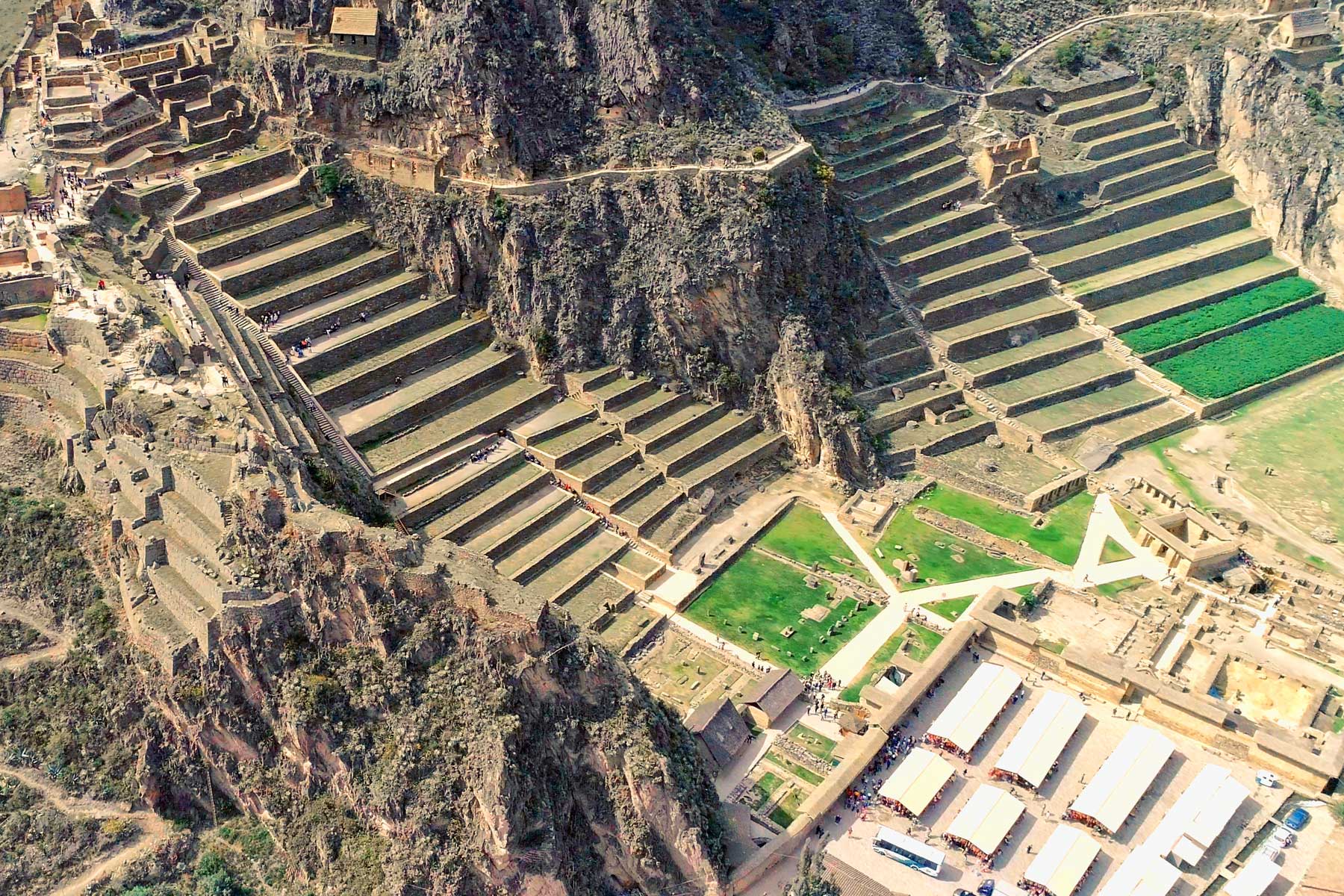A traveler’s mind often makes a direct leap: Peru is Machu Picchu. It has become the final destination, the icon that eclipses almost everything else in the collective imagination.
But that is just the end of the chapter. It’s not the whole book.
Before a single foot steps into the elevated citadel, there is a territory that was the true aorta of the Inca Empire. A corridor of fertile land, power, and knowledge that should not be treated as a mere passageway, but as a destination in itself. We are talking about the Sacred Valley of the Incas, the stage where the genius of a civilization unfolds with brutal honesty, between the murmur of the Vilcanota River and the silent gaze of colossal mountains.
To travel through it is not just to see ruins; it is to understand the prologue that gives meaning to the entire story.
Why is the Sacred Valley of the Incas so Special?
The adjective “sacred” is not a tourist label. It is the description of a functional and spiritual reality. Along the river, the land exhibits a fertility that is almost anomalous for the altitude, capable of producing a large-kernel corn and a biodiversity that was the economic engine of the Tahuantinsuyo. For the Andean worldview, this generosity was no coincidence; it was the manifestation of balance.
The valley is guarded by Apus, the great snow-capped mountains that, in local tradition, are considered protective entities. Peaks like Pitusiray or Chicón are not just geography; they are part of the pantheon that gives order to the world. This confluence of a vital river, fertile land, and imposing guardians conferred a unique status upon it: a space of immense strategic power, but also of profound ceremonial significance.
✨ Expert Tip: Don’t rush through the Valley, checking sites off a list. Allow yourself to stay in one of its villages for a night or two. Waking up in Ollantaytambo, for example, and seeing the fortress illuminated by the first rays of the sun, without the crowds, is a completely different experience. It allows you to feel the pulse of the place, not just photograph it.

The Faces of the Valley: Essential Towns and Archaeological Centers
Each stop here is a world in itself, a testament to the multifaceted Inca intelligence.
Písac: The Balcony of Control Suspended on a promontory, Písac is much more than its famous artisan market. The archaeological complex is a display of landscape mastery. It was a fortress, a ceremonial center, and a control post that defended the southern entrance to the valley. Walking its paths, which cling to dizzying cliffs, makes you feel the scale of their ambition. You will see agricultural terraces that look like stairways to heaven, a finely carved solar observatory, and a pre-Columbian cemetery that stretches across the hillside, a silent reminder of its vast population.
Ollantaytambo: The Fortress That Lives On Ollantaytambo strikes you with a different feeling. It is, above all, a feat of urban planning. Unlike other sites, the town at its feet was never abandoned. Its inhabitants today walk the same streets and use the same water channels that the Incas laid out centuries ago. It is a place where history is not in a museum; it is lived. The fortress that rises above the town is a monument to military and logistical ingenuity, famous for being the site of a rare Inca victory over the conquistadors. For hikers, the route to Ollantaytambo’s Inti Punku (Sun Gate) offers views that more than repay the effort of the ascent.
❓ Did you know… Ollantaytambo is considered one of the best examples of a “llaqta,” or administrative Inca town, that remains inhabited. To live there is, in a way, to coexist daily with the monumental legacy of the empire, a unique experience on the entire continent.
Chinchero: The Soul of Andean Textiles Chinchero is a place of serene beauty and deep cultural roots. Its main attraction is not just of stone, but of thread. It is the nerve center of textile art, where associations of weavers welcome you to show you, with admirable patience, the entire process. From washing alpaca wool to transforming it into vibrant designs with dyes extracted from plants, insects, and minerals. It is a masterclass in ancestral wisdom that refuses to disappear. Its main square, with a colonial church built on an Inca palace, is the perfect portrait of the syncretism that defines the Andes.
Maras and Moray: Open-Air Ingenuity These two nearby sites are proof that the Incas were masters of applied science. The Salt Mines of Maras are an almost surreal visual spectacle: thousands of glistening white salt pans descending the hillside, fed by an underground spring and exploited since pre-Inca times. Nearby, the concentric circles of Moray are a fascinating enigma. More than ruins, they are thought to have been a sophisticated agricultural research laboratory, where each terrace recreated a different microclimate to acclimate and optimize the crops that would feed the empire. It is a canvas of agricultural engineering.
Design Your Own Immersion in the Valley
The Sacred Valley is not an obstacle to be overcome to reach Machu Picchu; it is the foundation that sustains its greatness. Exploring it lays the groundwork for the perspective and awe that will make your visit to the citadel a much more profound experience. It is not just a place to see, it is a place to understand. It is an invitation to walk slower, to observe more carefully, and to feel how a monumental civilization dialogued with the earth.
Your Journey Begins with a Conversation
The best adventures are born from a good chat. If you feel the call of the Andes, let’s talk. We are here to answer your questions, share our experience, and design a journey that resonates with you. Ready for your trip? Chat with us on WhatsApp.

